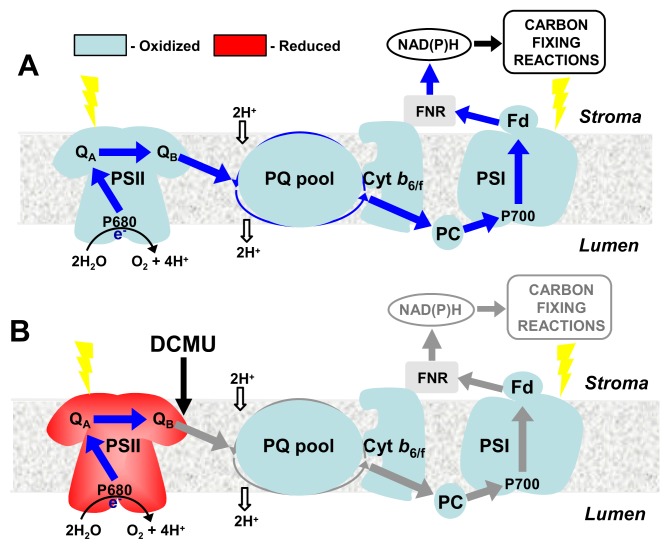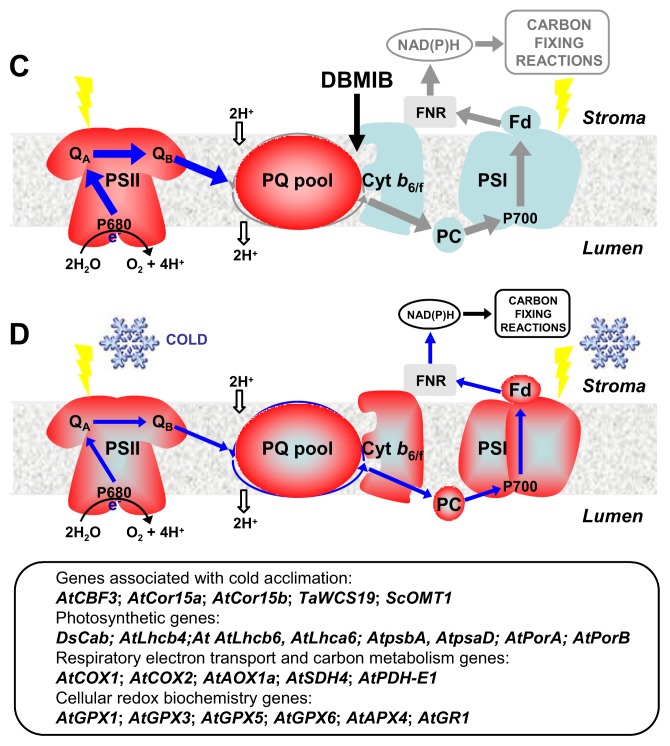Figure 2.
Simplified overview of possible effects of specific inhibitors and cold stress on the redox state of the photosynthetic electron transport chain components. (A) During growth and development of plants under optimal temperature conditions, the PQ pool and all components of the photosynthetic electron transport chain remain preferentially oxidized (light blue) because the rate of consumption of photosynthetic electrons through metabolic sinks (carbon fixing reactions) keeps pace with the rate at which PSII undergoes charge separation to reduce the PQ pool. Under these conditions, the linear photosynthetic electron flow (dark blue arrows) from PSII (water splitting) to PSI (NADP+ generation) dominates and is fully operational; (B) Adding DCMU [3-(3,4-dichlorophenyl)-1,1-dimethylurea], a selective inhibitor at the QB binding site of PSII, to chloroplast membranes or intact leaves, blocks the linear electron transport rendering photosystem II (PSII) components more reduced (red), while all components downstream of PSII remain oxidized due electron consumption by photo-oxidized PSI; (C) The specific inhibitor of Cytb6/f complex (Q cycle) DBMIB (2,5-dibromo-3-methyl-6-isopropyl-p-benzoquinone) causes a reduction of PSII complex as well as the PQ pool, whereas the components downstream of PQ remain oxidized; (D) Exposure of plants to cold stress results in lower demand for electrons required for carbon fixing reactions. Cold stress imposes thermodynamic limitations in the rates of consumption of photosynthetically-generated electrons by the carbon fixation reactions on the acceptor side of PSI which increases the reduction state of PQ pool and all components of the photosynthetic electron transport chain. Such a reduction state is quantified in vivo as excitation pressure using chlorophyll fluorescence induction. Excitation pressure reflects the relative redox state of QA, the first stable quinone electron acceptor in the PSII reaction centre. Under cold stress conditions (Figure 2D), the linear photosynthetic electron flow between PSII and PSI is partially restricted relative to controls (Figure 2A).


